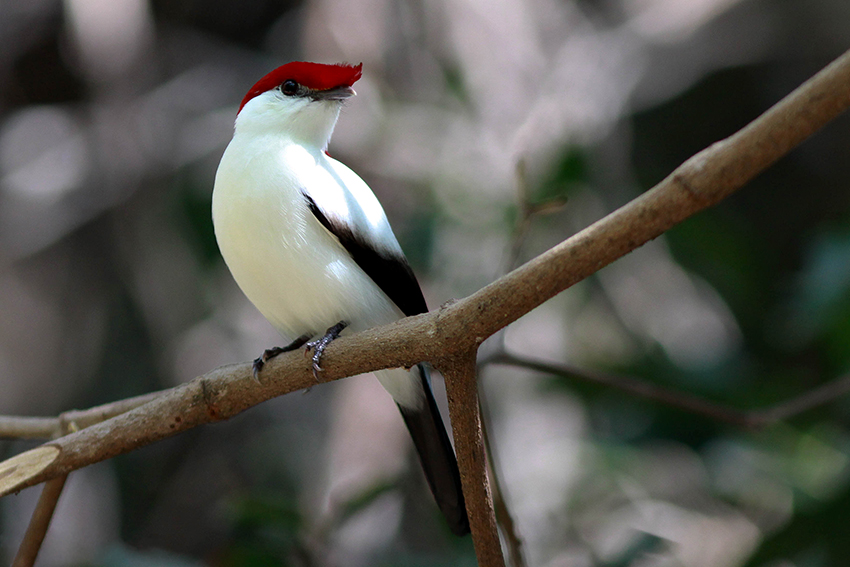According to Bette Loiselle, evolutionary changes in the tropical rainforest planted the seed for creative bird mating rituals.
Loiselle, a professor of wildlife ecology and conservation at the University of Florida, visited UT’s Lady Bird Johnson Wildflower Center on Sunday to give a talk on tropical birds’ mating strategies and the roles they play in rainforest ecosystems.
Loiselle’s research team studies a family of brightly-colored tropical birds known as manakins at the Tiputini Biodiversity Station in Ecuador’s Amazon rainforest. Manakins live in the understory of tropical rainforests from Mexico to Argentina, where they eat sugary fruits and disperse the seeds along the forest floor. Many tropical plants’ seeds must be moved far from their parent plant in order to grow.
“(Seeds are) very dependent on some animals to act as a vector and move those seeds away,” Loiselle said.
She added that this feeding strategy, which spreads seeds over a larger area in the rainforest and is important for new plants to grow, is connected to manakins’ mating rituals.
“Being seed dispersers and eating fruit has led to a life of song and dance,” Loiselle said. “This fruit feeding is really a key adaptation in manakins that has allowed them to develop a very different kind of breeding system.”
Manakins display lek mating, where males have elaborate displays meant to attract females and females select a male mate and raise offspring mostly alone. Lek mating, which Loiselle called a “tropical singles bar,” creates fierce competition among males, with reproductive skew favoring a select few. Only six percent of bird species display lek mating, Loiselle said, and manakins’ mating behavior makes them useful in studying sexual selection.
Loiselle said that manakins have a mutualistic relationship with plants, where birds feed on plants’ fruit and plants rely on the birds dispersing their seeds. She added that male manakins have developed flashy displays to attract mates as part of their role as seed dispersers. Male manakins disperse seeds farther from parent trees and around their leks, or courtship areas. Female manakins disperse seeds more evenly and over shorter distances. Past studies by other ecologists have found a correlation between lek breeding and the amount of seeds dispersed over an area.
Loiselle’s team also researches what traits female manakins look for when selecting a mate. Loiselle said they found that males with larger social networks and more genetic variation were more successful in mating. They also found that more elaborate displays from males were correlated with increased brain size.
“It all comes down to fruit — I really believe the fruit-feeding adaptations of manakins has led to this really incredible evolution of these kinds of displays,” Loiselle said.















